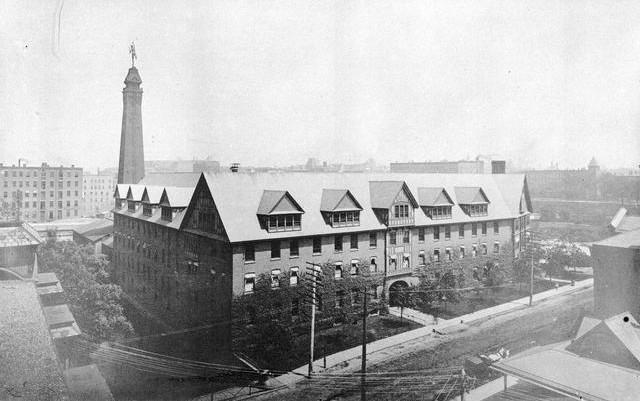Henry Suggett opened his tobacco shop on East Main Street in 1846. In 1864, he welcomed William Kimball as a partner and the company became known as Suggett & Kimball. In September 1867, Suggett retired from the business and passed his share to his partner. Then, on October 30, Kimball transferred both business and property to his father-in-law, the former Rochester mayor Rufus Keeler, “for full consideration” with Kimball employed as his agent.
I have not tried to track down records around these transactions but I suspect that Keeler may have loaned money to his son-in-law on two occasions: once to buy into the partnership with Suggett and then a second time to help Kimball buy Suggett’s share of the business when the partnership dissolved. That final transfer may have been a means of settling Kimball’s debt to Keeler.
One week later, November 7, officials from Internal Revenue seized the tobacco shop on the “ground that Kimball intended to dispose of the…property with intent to defraud the Revenue Laws.” Kimball fought back against the allegations and, by November 15, had regained possession of the shop and was “pursuing his usual business.” Nonetheless, Kimball and the government waged a bitter battle that went on for almost five years and required three trials to resolve. Henry Suggett seems to have caused the problem.

Federal taxes on the tobacco industry were very high at that time, leading some owners to hide part of their income to reduce the burden. Suggett, perhaps trying to deflect any shadow of tax fraud from himself, claimed that as early as 1865 Kimball failed to make full return to the government by being in league with a man named Ketchum, who served as the government’s Inspector of Tobacco. In a suspicious bit of timing, Ketchum left his job in August of 1867, just before the Suggett-Kimball partnership ended. Kimball denied the charge but the ongoing suit remained a dark cloud over the business.
For a time, Mr. Ketchum insisted that no fraud had occurred. However, after the government granted him immunity, the story changed. He said the “scheme” was originally between him and Suggett but that Kimball had “acquiesced” after joining the partnership. Kimball challenged that assertion. By the end of the third trial, a jury remained unconvinced that Keeler had been aware of the past fraud between Suggett and Ketchum or that Kimball was part of any attempt to defraud the government. With that decision, the government’s suit came to an end in September of 1872.
During those years of litigation, the Keeler-Kimball tobacco shop earned increasing profits. The “master mechanic” had used his skills to create a press capable of packaging small amounts of granulated tobacco that required very little labor, and at a cost that was “but a trifle” of any other system known at the time. Other inventions would follow, and a small tobacco business on Main Street made several moves into larger quarters as it grew steadily into an industry that would soon require factory-sized space and many more employees.
For a time, the Keeler family remained directly involved in Kimball’s company with brother-in-law Bradley B. Keeler listed as partner for several years.
During this period, Rufus Keeler maintained an office in a four-story building he owned at the southwest corner of Main Street and South St. Paul (today it is South Avenue). The building, known as the Metropolitan Block, had once housed the Metropolitan Theatre, but by then it had become the Rochester Opera House. On the afternoon of January 19, 1875, Keeler was at his office when he suffered a massive stroke that immediately rendered him unconscious. He was removed to his home a few doors away where he died the next evening. He was 66.
Kimball lost the man who had guided him on a path to success. He would honor Keeler’s memory for the rest of his life. Over the next few years, in collaboration with Rochester architect James Goold Cutler, Kimball began building a factory along the west bank of the Genesee River that would bring great wealth. But on July 9, 1879, he suffered another personal loss when his 43-year old wife Marion died of chronic hepatitis.
